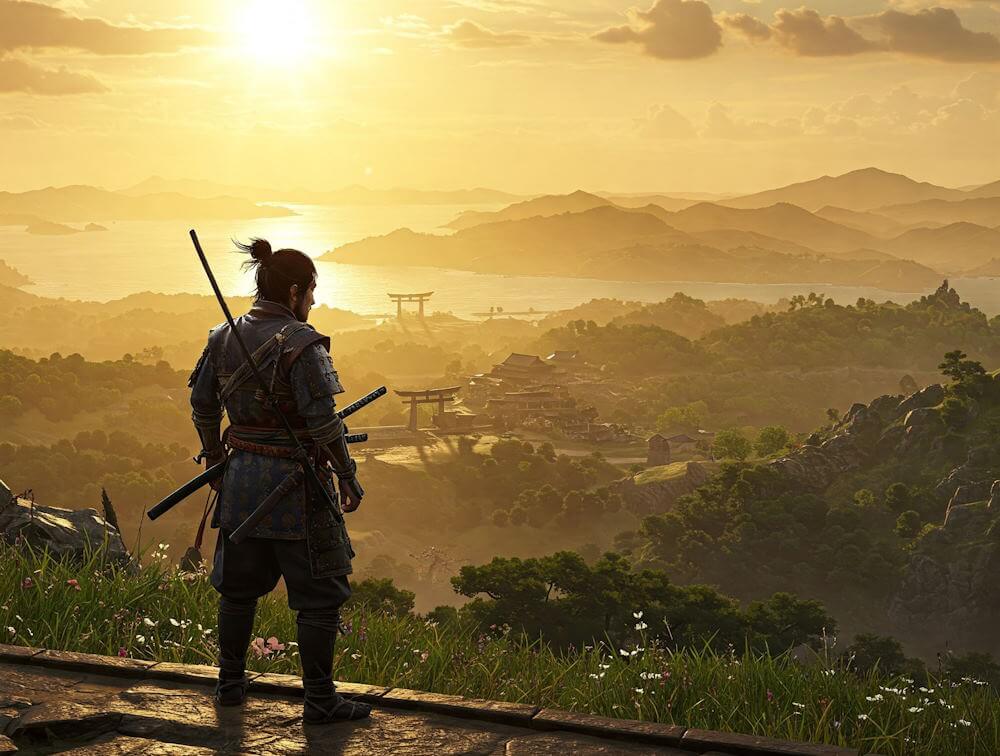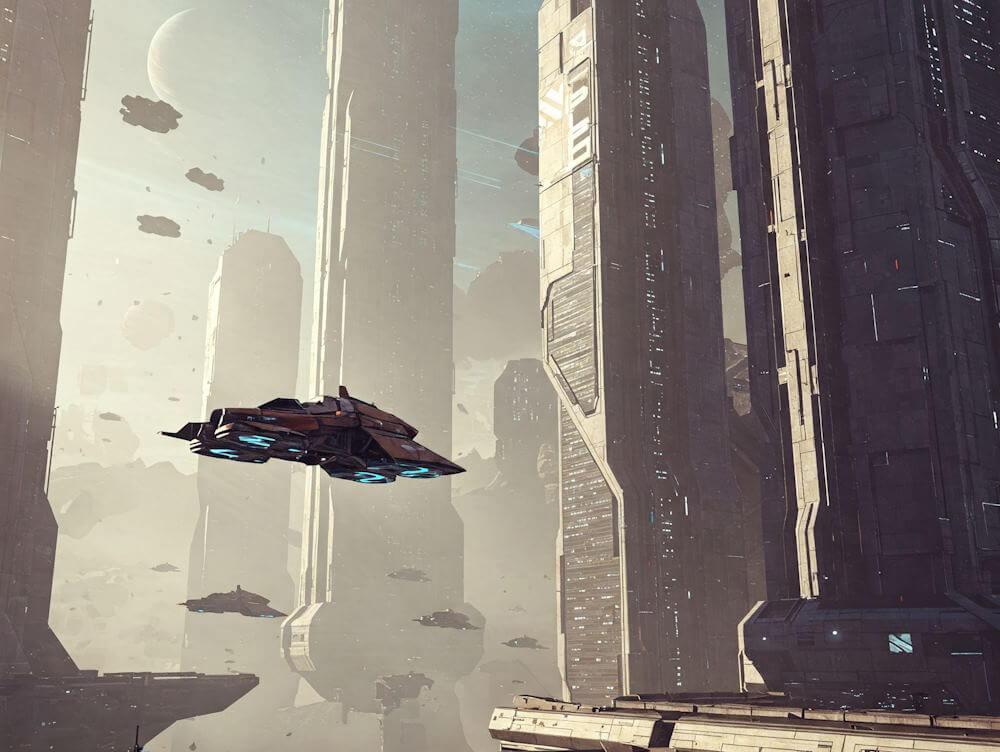Ghost of Tsushima, an action-adventure video game developed by Sucker Punch Productions, was released on July 17, 2020. Set during the late 13th century, in the midst of the Mongol invasion of Japan, the game immerses players in the richly detailed landscapes of feudal Japan. With a focus on exploration and combat, it received critical acclaim, commended for its aesthetic beauty, engaging gameplay, and compelling story. The remarkable attention to detail in both graphics and sound design illustrates the developers’ commitment to authenticity, presenting a realistic portrayal of historical events.
At the heart of Ghost of Tsushima is the story of Jin Sakai, a samurai warrior whose life is forever changed when the Mongol Empire invades his homeland. As his clan is decimated and the samurai tradition is challenged, Jin is faced with the dilemma of adhering to the samurai code or adapting to more unconventional, guerrilla tactics in order to defeat his oppressors. This internal conflict is central to Jin’s character development and is further complicated by his relationships with other characters, including his mentor, a former samurai who embodies traditional values, and various allies who represent different aspects of Japanese culture and society. Through Jin’s journey, the game explores themes of honor, sacrifice, and the consequences of war, providing players with a narrative that resonates on many levels.
The historical context of feudal Japan serves as a captivating backdrop for Ghost of Tsushima, appealing to both history enthusiasts and gamers alike. As players navigate the vast open world, they encounter various challenges that highlight the cultural and ethical dilemmas faced by the samurai, thus enriching the overall gaming experience. Ultimately, Ghost of Tsushima stands out not only for its gameplay mechanics but also for its poignant storytelling and the immersive world it crafts.
Stunning Visuals and World Design
The visual design of Ghost of Tsushima is among its most captivating features, highlighting the technical prowess of modern gaming while drawing players into a meticulously crafted world. The game’s graphics showcase an impressive level of detail, from the intricately designed character models to the expansive and vibrant natural landscapes that encompass Tsushima Island. Each character is rendered with lifelike features, expressions, and fluid animations, which enhance both storytelling and gameplay immersion.
One of the defining characteristics of Ghost of Tsushima is its breathtaking environments, which serve to create a rich and engaging backdrop for the player’s adventure. As players traverse through the open world, they encounter a diverse range of ecosystems, including lush forests adorned with cherry blossoms, serene grasslands swaying in the wind, and towering snow-capped mountains. This variation not only showcases the beauty of Tsushima but also encourages exploration, with hidden paths and secrets waiting to be discovered in each unique setting.
The use of color in the game is particularly noteworthy, with the artistry seamlessly blending vibrant hues that evoke the mood and atmosphere of each scene. For instance, the warm tones of sunset illuminate the horizon, while the cool blues of moonlit nights add a mystical quality to the exploration. This attention to visual detail and the dynamic weather system further contribute to the immersive gameplay experience, allowing players to feel as though they are not just observers, but participants in a living, breathing world.
Ultimately, the stunning visuals and thoughtful world design of Ghost of Tsushima elevate its status in the gaming landscape, creating a compelling environment that fosters deeper connections with the narrative and gameplay mechanics. Through a masterful combination of artistic vision and technical execution, Tsushima Island becomes not only a setting but a character in its own right, inviting players to delve into its depths and secrets.
Innovative Combat System
The combat system in Ghost of Tsushima stands out as one of the game’s hallmark features, offering players an immersive experience that marries traditional swordplay with strategic depth. Central to this system is the stance mechanic, which allows players to switch between four distinct stances, each tailored for combating different types of enemies. This mechanic encourages players to engage in careful observation, assessing opponents and adapting their approach accordingly. The fluid transition between stances not only enriches combat encounters but also injects a layer of strategy, as players must calculate when to strike, defend, or retreat.
Moreover, the game excellently integrates swordplay with stealth tactics. Players can choose to engage directly in open combat or utilize the environment to stealthily eliminate foes. The balance between these two methods enhances gameplay, as players can effectively navigate through scenarios requiring either brute strength or cunning tactics. The mechanics of blending visible attacks with hidden movements foster a sense of versatility, allowing for personalized play styles that suit individual preferences.
The inclusion of tools such as smoke bombs, kunai, and shurikens adds another dimension to combat. These tools can be used to create distractions, escape pursuers, or incapacitate enemies, thus amplifying player options during confrontations. The strategic use of these tools, combined with the choice of stances, creates dynamic battles where players must think on their feet. Each confrontation unfolds differently based on the chosen tactics, fostering a sense of accomplishment and mastery as one learns the nuances of the combat system.
In essence, Ghost of Tsushima’s innovative combat system cultivates a rich battlefield experience, harmonizing offense and defense while rewarding strategic planning and quick decision-making. This intricate design elevates the game beyond mere action, inviting players to explore a wide array of martial possibilities.
Narrative and Character Development
Ghost of Tsushima offers a compelling narrative that intricately weaves together themes of honor, sacrifice, and the moral dilemmas faced by its characters, particularly Jin Sakai. Set against the backdrop of feudal Japan during the Mongol invasion, the story unfolds as Jin grapples with the expectations of the samurai code and the harsh realities of war. The primary narrative thrust revolves around Jin’s transformation from a traditional samurai, bound by honor, into a rogue warrior who takes on unconventional tactics to protect his homeland. This evolution highlights the tension between adhering to ancestral values and the necessity for adaptation in the face of dire circumstances.
Throughout the game, players encounter a cast of supporting characters, each contributing significantly to Jin’s journey. Characters such as Yuna, a skilled thief with her own reasons for fighting, and Norio, a fellow warrior grappling with his beliefs, provide depth and perspective on the conflicts surrounding them. Their personal arcs enrich the narrative, showcasing a variety of responses to the catastrophic events that shape their lives. For instance, Yuna’s background not only serves as a catalyst for Jin’s development but also embodies the theme of sacrifice. Her willingness to abandon societal norms in pursuit of survival challenges Jin’s understanding of honor and duty.
The interplay between Jin and these characters reveals the complexities inherent in the samurai code, as he learns that true honor may sometimes require betrayal of traditional values. As players delve deeper into this enriching story, they are prompted to contemplate the implications of Jin’s choices, drawing on themes that resonate far beyond the game’s setting. Each character’s journey intersects with Jin’s, creating a narrative tapestry that captivates and engages the player, ultimately elevating Ghost of Tsushima to a significant standing within the realm of video games.
Cultural Representation and Historical Accuracy
Ghost of Tsushima has been widely praised for its thoughtful cultural representation and its attention to historical accuracy, making it a significant contribution to the video game industry. Set during the Mongol invasion of Japan in the late 13th century, the game immerses players in the rich tapestry of Japanese culture, showcasing the samurai code of honor, as well as the everyday life and traditions of the time. This portrayal goes beyond mere aesthetics; it reflects an understanding and respect for the values and practices associated with the samurai era.
The developers have made a concerted effort to accurately depict traditional Japanese attire, architecture, and landscapes. For example, the clothing worn by characters is inspired by historical garments, capturing the textures and designs unique to the period. The landscapes of Tsushima Island are faithfully recreated, presenting players with breathtaking visual representations of natural beauty that resonate deeply with the culture. This authenticity not only enriches the gaming experience but also educates players about the island’s significance and the historical context of its inhabitants.
Moreover, Ghost of Tsushima is committed to honoring the island’s history and people. It incorporates local folklore and historical figures, providing a narrative that speaks to both local pride and a global audience’s interest in Japanese culture. The game does not shy away from depicting the challenges and tribulations faced by its characters, giving players a nuanced understanding of the era and its impact on Japanese history. By addressing themes of honor, sacrifice, and resilience, the game aligns itself with historical events while offering an engaging story suitable for diverse audiences.
Exploration and Side Activities
Ghost of Tsushima offers players a breathtaking open world, meticulously crafted to encourage exploration and discovery. One of the standout features of the game is its use of environmental cues, which guide players through the vast landscapes without reliance on traditional markers or signs. The guiding wind is an innovative mechanic that subtly directs players’ paths, enhancing immersion and creating a sense of wonder as they traverse the stunning island of Tsushima.
As players navigate through dense forests, rolling hills, and picturesque shores, they encounter a variety of landmarks that spark curiosity and invite exploration. Each area is rich with visual storytelling, which not only captivates but also integrates seamlessly into the overarching narrative. These discoveries are further complemented by the myriad of side activities available, allowing players to engage deeply with the game world.
Side quests, known as ‘Tales’, serve to enrich the narrative and frequently introduce players to unique characters, each with their own backstories and personal dilemmas. These quests vary in tone and difficulty, offering players the opportunity to make choices that can impact the world around them. Collecting items such as Mongol artifacts, bamboo strikes, and haikus adds another layer of engagement, encouraging thorough exploration of the diverse environments. Each collectible unveils aspects of Tsushima’s culture and landscape, enriching the player’s experience and deepening their connection to the game world.
Additionally, players can partake in various mini-games, such as dueling and the charming fox dens, which not only serve as enjoyable diversions but also foster a sense of companionship with the game’s wildlife. This blend of exploration and side activities makes Ghost of Tsushima not just a journey through a beautiful landscape, but an immersive experience enriched by the vibrant history and culture of its setting.
Musical Score and Sound Design
The musical score and sound design of “Ghost of Tsushima” play a pivotal role in crafting the game’s atmospheric setting and emotional depth. Composer Ilan Eshkeri, along with collaborative efforts from other talented musicians, has intricately woven a soundscape that resonates with the spirit of feudal Japan. The score masterfully integrates traditional Japanese instruments such as shamisen, shakuhachi, and taiko drums, providing players with an auditory experience that reflects the culture and history of the period.
The use of these instruments not only enhances the game’s authenticity but also serves to evoke a range of emotions as players navigate through various environments. As the narrative unfolds, the music shifts in tone and intensity, mirroring the protagonist Jin Sakai’s journey from the peaceful and serene landscapes of Tsushima to the heart-wrenching moments of conflict and struggle. This seamless synchronization between the visual elements and the score deepens players’ emotional engagement, which is essential for immersive storytelling.
In addition to the musical composition, the sound design further enriches the gaming experience. Ambient sounds, such as rustling leaves, distant waves crashing against rocky shores, and the whispers of the wind, create a vivid backdrop that immerses players fully into the game’s world. These sound elements draw players deeper into the narrative, allowing them to feel the weight of their decisions and the stakes involved in the quest for honor and liberation.
Ultimately, the combination of Ilan Eshkeri’s evocative musical score and the intricate sound design results in a deeply engaging atmosphere that sets “Ghost of Tsushima” apart from other titles. This thoughtful approach to audio not only honors Japanese culture but also plays a critical role in enhancing player experience and emotional connection throughout the game.
Critical Reception and Awards
Upon its release on July 17, 2020, Ghost of Tsushima garnered significant acclaim from both critics and players alike. The game was praised for its lush visuals, engaging storytelling, and immersive world, which successfully transported players to feudal Japan. Major gaming outlets, including IGN and GameSpot, awarded the title high scores, emphasizing its cinematic quality and rich narrative. IGN awarded the game a score of 10/10, highlighting its engaging combat mechanics and stunning open world. This level of praise positioned Ghost of Tsushima as a standout title, especially in a year that featured other notable releases.
In addition to its outstanding reviews, Ghost of Tsushima achieved impressive commercial success. Within three days of its launch, the game sold over 2.4 million copies, making it the fastest-selling first-party original title on the PlayStation 4. This level of commercial success is a testament to the game’s quality and the effective promotional strategies employed prior to its release.
The accolades did not stop with commercial achievements; Ghost of Tsushima also secured numerous awards, including the coveted Game Critics Awards for Best of Show at E3 2018 and Best Art Direction. Moreover, it was nominated for various categories at The Game Awards 2020, including Game of the Year, which showcased its widespread recognition across the gaming community. Additionally, the game was honored with the Critics’ Choice award from the Game Awards, solidifying its status within the industry.
Player feedback was overwhelmingly positive, with many praising the game’s atmosphere and the authenticity of its cultural representation. Such reception paved the way for Ghost of Tsushima to not only stand out in 2020 but also establish itself as a significant title within the broader landscape of gaming history.
Conclusion: Legacy and Future of Ghost of Tsushima
Ghost of Tsushima has made an indelible mark on the gaming landscape since its release, not only through its compelling narrative and breathtaking visuals but also by its innovative approach to cultural representation in video games. The game has managed to resonate deeply with players worldwide, embodying a rich historical context while delivering an immersive experience that honors Japanese culture. Its emphasis on storytelling, character development, and exploration has set a new standard in action-adventure games, inspiring players and developers alike.
The impact of Ghost of Tsushima is profound, prompting discussions regarding the importance of cultural authenticity and representation in the gaming industry. Many developers are now looking to emulate the intricate narratives and engaging worlds that Sucker Punch Productions so masterfully crafted. This shift towards more inclusive storytelling can only lead to more diverse gaming experiences, thus enriching the medium as a whole.
As for the future, there are high expectations regarding potential sequels and expansions. The success of Ghost of Tsushima has opened the door for further explorations of its beautifully realized universe. Players are eager to see the continuation of Jin Sakai’s journey and the rich lore surrounding feudal Japan. Speculations about a potential sequel or downloadable content are already rife, indicating substantial interest from the gaming community.
In conclusion, Ghost of Tsushima stands out not only for its artistry and gameplay but also for its role in shaping the future of video game storytelling. Its legacy will undoubtedly influence upcoming titles and inspire a new generation of developers to approach narratives with the same depth and authenticity. As the gaming industry evolves, the bold vision presented by Ghost of Tsushima will continue to be a benchmark for quality and cultural relevance.



